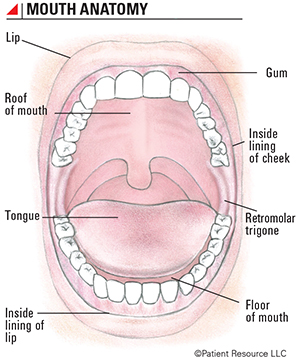Cancer Immunotherapy
Oral Cancer
The oral cavity includes your lips, gums, lining inside the lips and cheeks, hard palate (front part of the roof of the mouth), the front two-thirds of your tongue and the floor of the mouth underneath it, and the retromolar trigone (the small space behind each wisdom tooth).
The majority of head and neck cancers begin in the oral cavity. The tongue is the most common site. Oral cancers typically form from squamous (SKWAY-mus) cells, which line the moist surfaces of the mouth. Early-stage symptoms may include minor mouth pain, bleeding, jaw swelling or a white or red patch (ulcer) on the gums, tongue or lining of the mouth. Because there is no recommended routine screening for oral cancers and these symptoms can signal many other conditions, oral cancers are frequently not diagnosed until late stage.
Cancers that form in the back of the mouth, including the base of the tongue, posterior (rear) roof of the mouth and tonsils, are considered throat cancer (see Throat Cancer).




